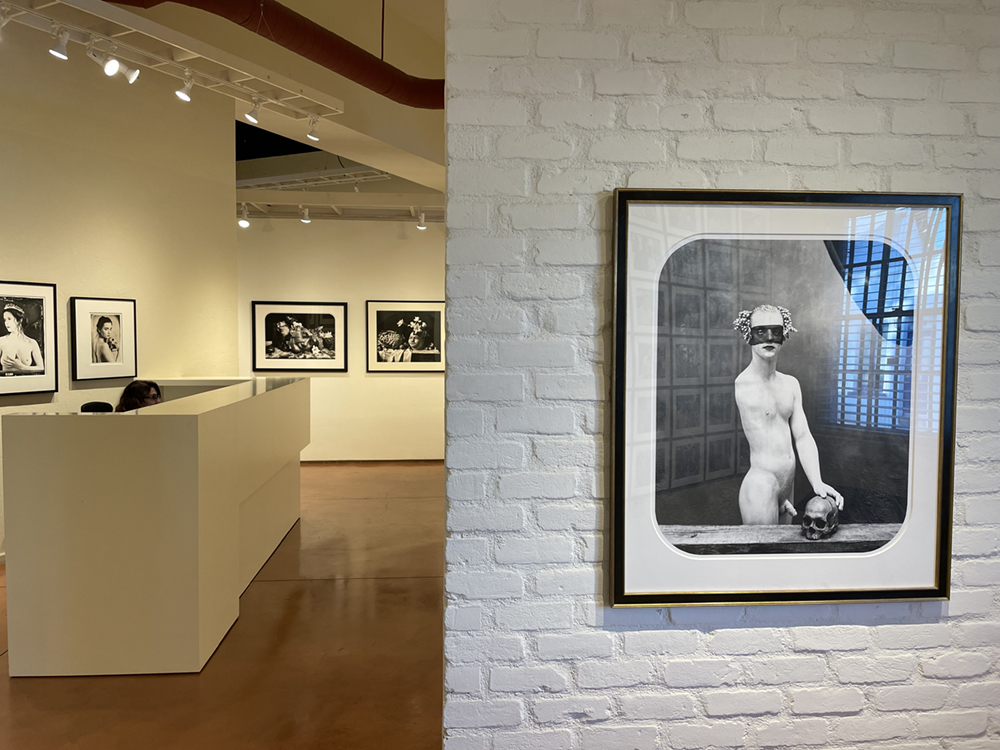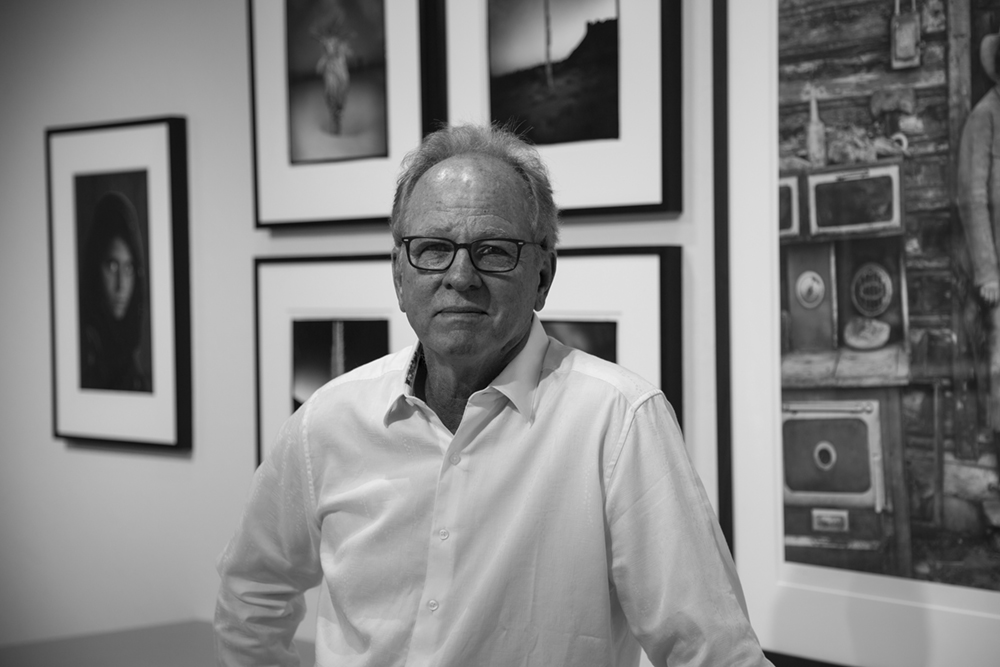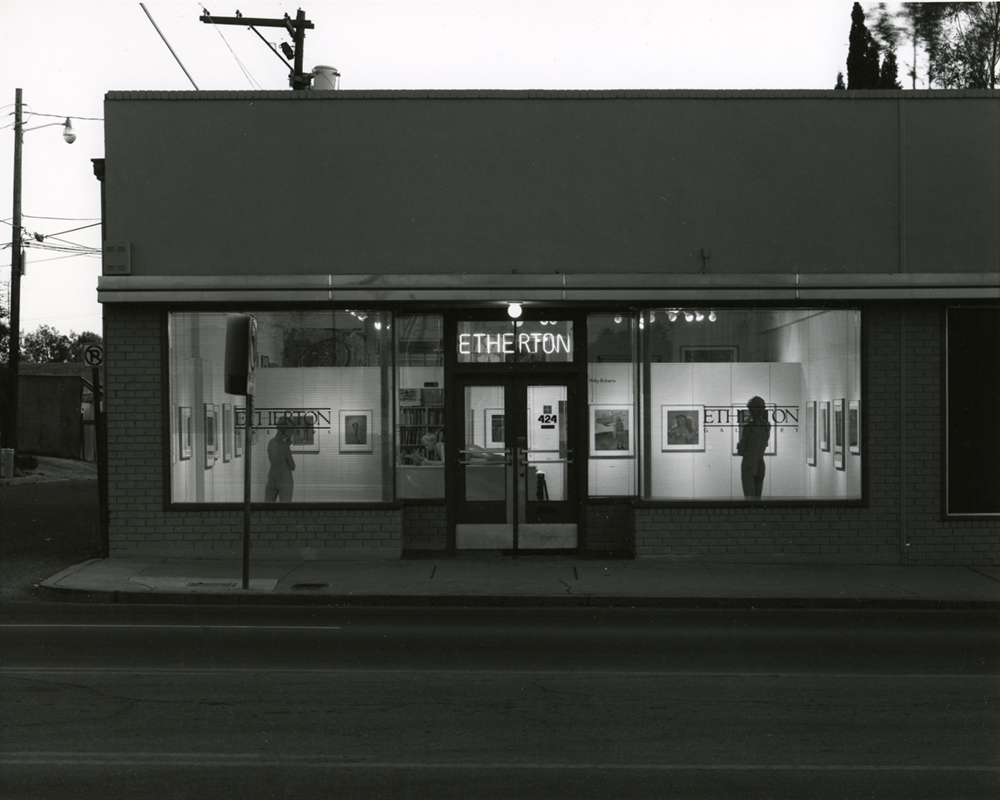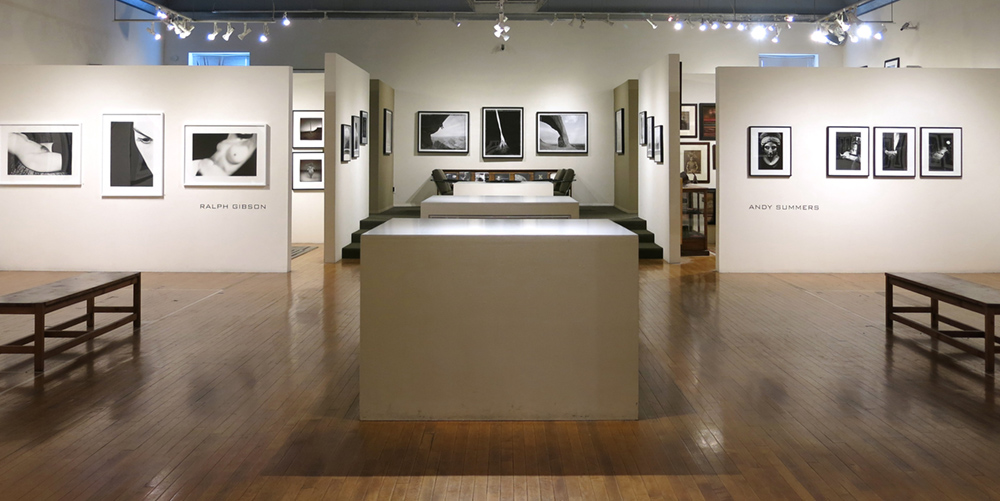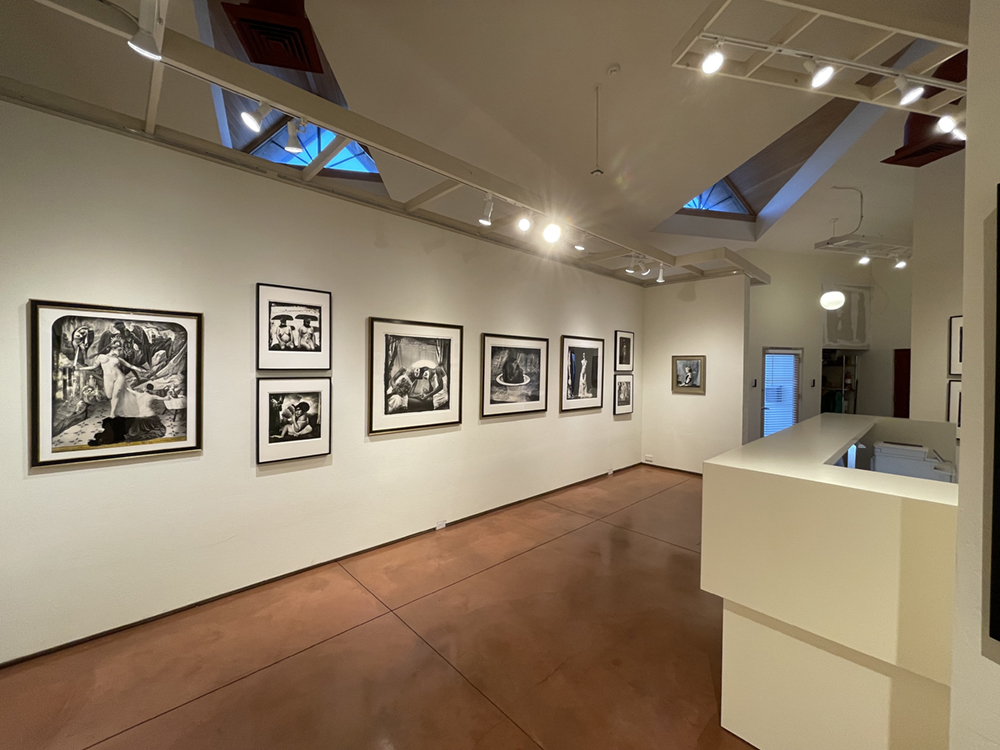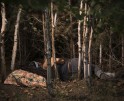Etherton Gallery Celebrates Fortieth Anniversary
It is an absolute honor and privilege to celebrate Etherton Gallery’s fortieth anniversary as a contemporary photography powerhouse in Tucson, Arizona. Still barreling forward after a rich history aswirl with a prolific number of exhibitions, fairs, and events, the gallery and its team have recently moved to a brand new location after a 33-year stint in their previous space. Inaugurating this change of scene will be Joel-Peter Witkin: Journeys of the Soul, a sweeping survey of works spanning the entirety of the gallery’s four-decade relationship with the artist. An interview with Terry Etherton, founder of Etherton Gallery, follows.
Since 1981, Etherton Gallery has showcased the icons of the history of photography as well as the contemporary artists changing its course. The gallery’s programming highlights the most important figures in the history of the medium, and remains dedicated to making great works of photography accessible to novices and experienced collectors alike.
A champion of the arts of the Southwest and in particular Tucson, the gallery also exhibits top local and regional artists working in a variety of media, and presents free exhibition programs that address related local and national issues. Etherton Gallery is a long-standing member of the Association of International Photography Art Dealers (AIPAD) and participates in fine art photography fairs including the AIPAD Photography Show NY, Classic Photographs LA, and Paris Photo.
Erica Cheung: Tell me how you got started with your gallery.
TE: I grew up in Carbondale, Illinois. I got drafted into the Army out of high school, came back after two years of service, and entered Southern Illinois University (SIU) with a double major in cinema and photography. After graduating, I moved to San Francisco. I’d been in California during the Army, and I’d always kind of wanted to go back there. I lived there almost ten years, through most of the ’70s. I moved to Tucson in the summer of ’81 and opened the gallery then. This summer is our fortieth anniversary in business here. We’re the oldest, longest-running gallery in Tucson—which means I’m getting old.
EC: No! What brought you to Tucson specifically?
TE: When I lived in San Francisco, I mostly worked in the film industry as a cinematographer. I would work on projects for six months at a time, with no breaks, and then there’d be a three or four month break while I was waiting for some money to come through. Between these projects, I’d go down to Tucson to visit friends that I went to high school with. They’d go off to work, and I’d explore the area. In 1975, the Center for Creative Photography opened in Tucson, and I started hanging out there. I knew right away that it was going to be a big deal—I was seeing Ansel Adams and Imogen Cunningham and all these other people in this small little bank building which was the first facility of the Center.
I decided after a particularly grueling project in San Francisco that I wanted to move. As I was sitting at breakfast one day in Tucson, I saw a ‘for rent’ sign across the street. I went over, called the number, and rented the space—for $235 a month—on the spot, with no plan at all.
EC: And what was the beginning of your adventure like?
TE: For the first four or five years, it was just me; I didn’t have any employees. I started by showing a lot of my Bay Area friends—people like Linda Connor, Jack Fulton, and Richard Misrach—and combined that roster with some of the people I’d met in Arizona.
But nobody had really warned me about the summers in Tucson! I knew it got hot, but I didn’t know people just disappeared for the season. I decided that if no one was going to see me, I was going to have to go see people if I wanted to meet museum curators and the like.
This was all before the internet, cell phones, any of that stuff. At that point, if you wanted to see a curator in, let’s say, Houston, you had to go in person to see them. For three summers in a row, I loaded up a car with photographs, and I had with me the following: a road map, a calendar, the Eastman House Guide of Photographic Collections, a baseball schedule (because I’m a big baseball fan), and the phone numbers of the curators in question. I would go all the way down to, say, St. Petersburg, Florida, then drive up the East Coast to Boston, then west through the Rust Belt, through Cleveland and Detroit and Chicago, then through Denver, and then back down. These were like eight week trips! I was really lucky, because everybody that I called saw me. I kept meeting more people, and people would invite me to stay with them. It was amazing. I sold enough on those road trips to keep going onward to the next place.
That’s what the first five years of my business looked like; I was doing everything. I tell people that I know how to do a lot of stuff a little bit—I know how to frame, how to cut mats, how to hang art, how to light art. I know a little bit about graphic design, about publicity, but I knew nothing about sales when I started. I had no business background whatsoever.
EC: That’s an incredible journey, and I think the notion of being a kind of ‘jack of all trades’ resonates with many people in the art world. Why have you continued to stay in the commercial world as a dealer, as opposed to any other position in the arts?
TE: The reason I keep doing all of this is because I love what I do. I come to work every day and I can’t wait to see what happens. The thing about this job is that no two days are alike. I’m talking to you, right? That’s something different. I don’t know what’s going to happen in an hour from now, or in two, three hours. Maybe nothing, maybe all kinds of stuff! But it’s never, ever boring.
The only other thing I would want to do if I didn’t do this is be a wine importer! But I can’t imagine doing anything that I enjoy more than what I do now. Forty years is a long time— we’ve done close to 400 exhibitions, and about 130 art fairs. It’s a lot.
EC: What has changed during the pandemic?
TE: Because of COVID, we haven’t been doing art fairs—which has allowed us to shift our emphasis toward different things. We got a lot leaner, and we’re more organized now than we’ve ever been. I’ve gone through every box and every drawer, making sure that the labels on them actually correspond to what’s inside, and we’ve gotten rid of a lot of stuff that’s just been sitting around for a long time.
We got the Paycheck Protection Program (PPP) funds twice. So I feel very lucky—I got a lot of help, it got us through this, and we’re entering the fall in better shape than we were going into COVID.
And, of course, in the middle of this, we moved after being in our old space for 33 years. Our new space opens on September 18th at 340 South Convent Ave.
EC: Congratulations! It’s amazing that your gallery has come out the other end of everything stronger, especially when considering how the pandemic has left a trail of struggling arts institutions in its wake. A number of galleries, for example, have transitioned into purely online platforms and are foregoing traditional brick and mortar locations. Why do you continue to advocate for having a physical (not to mention brand new) space?
TE: I love the creativity that goes into curating and designing physical exhibitions. There’s just such a satisfaction in pulling everything together so that it coheres, and then stepping back and appreciating all of that. Our new space is a different kind of challenge when it comes to designing shows—whereas our old space was a giant room, this new space meanders around. There’s lower rooms and higher rooms, and it’s a gallery of discovery. We’re going to be able to control the flow of traffic and the order in which people see things.
This new space is killer—it was built in ’87 by a private collector who built it to house his own collection. A lot of people going back to the ’80s remember coming into this space, because the collector would go off to New York, buy ten paintings at auction, bring them back to Tucson, and then invite everyone to see them. I used to come here for openings, never thinking I would set up shop here.
This move is an important thing because it’s a statement that I’m not going anywhere. Even though I just turned 70 in February, I feel like I’m 30 again—back to when I first opened the gallery. It’s a new space, a new set of circumstances, and a whole new neighborhood.
EC: And will you tell me about the Joel-Peter Witkin show that will be inaugurating the space?
TE: I met Joel in 1980 in Albuquerque, where I was visiting a friend. At the time, this friend did all of Joel’s copy work—this was back when Joel made 4×5 transparencies. So I used to see a lot of the work around my friend’s house, and one day, my friend said, “Oh, let’s go see Joel — he’s working tonight at Al Monte’s Restaurant downtown.” And I asked, “What’s he doing there?” And my friend responded, “He’s the maître d’.”
So we went, Joel served us a Caesar salad, and we sat and talked. I immediately liked him—his sense of humor and just how goofy he was. Plus, his work—nobody does anything like that! At the time, I was too new in the business to ask him to come on board with my gallery. We would be in touch and I would sell a few photographs here and there, but we didn’t have our first show with him until ’88.
We’ve done something like fifteen shows of his work since then, including a solo booth at Paris Photo two years ago in collaboration with Joel’s Paris dealer, Galerie Baudoin Lebon. We took a bigger booth than either gallery could afford on our own and combined it—and it worked really well. In getting ready for that show, we gathered up a lot of material—a lot of which I still have to draw from for this upcoming show.
Paris Photo 2019, Joel-Peter Witkin – Icones, booth presented by Etherton Gallery and Galerie Baudoin Lebon
Additionally, a collector in Phoenix named Stéphane Janssen who died a couple of years ago had about sixty Witkins, most of which were consigned to us upon his death. Then, Catherine Edelman Gallery’s inventory of Joel’s works came to us. Which means that now, between Paris Photo, the Janssen Collection, Catherine’s inventory, and our own, we have hundreds of Joel’s prints and drawings.
Needless to say, the show is going to be a very comprehensive show. It’s going to have a lot of the greatest hits. A number of pieces will not be for sale because they’ve already been sold, but I wanted to borrow them back to round out the show. A lot of commercial galleries won’t do that because they don’t want to take up wall space with something they can’t sell—but I just want to make such an important show as strong as possible.
We have works by Joel from the ’70s through last year. The hard part is what not to show because we have so much good material. My challenge is to give people what they want—some of the earlier ’80s work they might recognize—but also show them something they may never have seen.
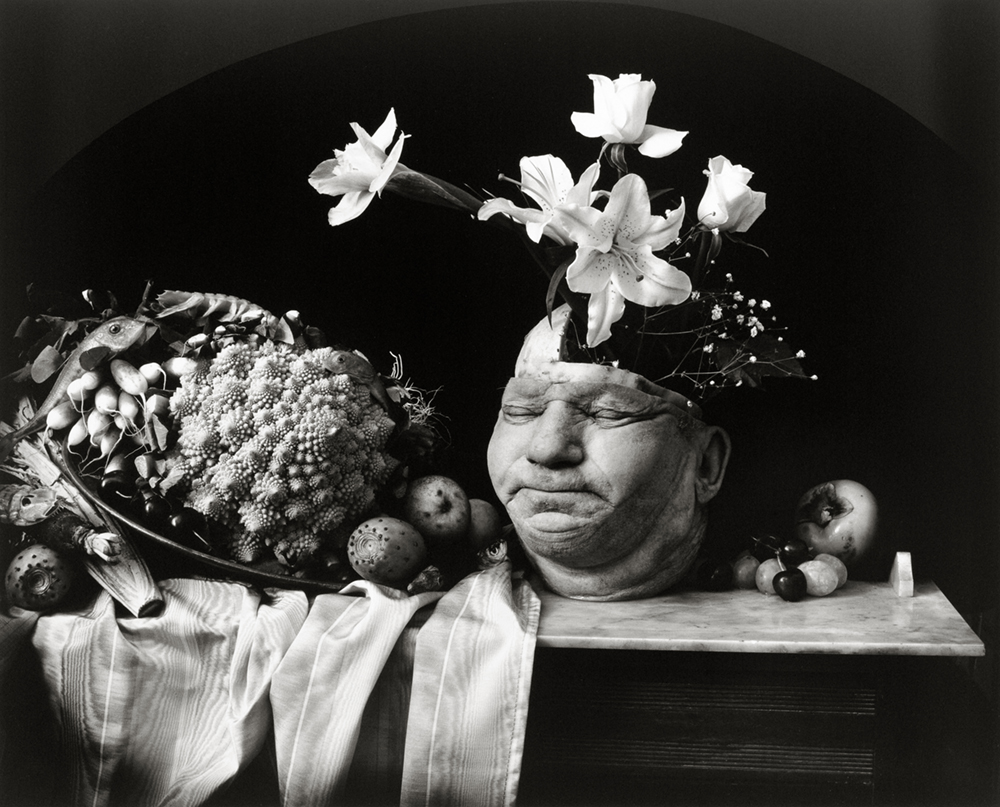
©Joel-Peter Witkin, courtesy Etherton Gallery, “Still Life, Marseilles” (1992), toned gelatin silver print
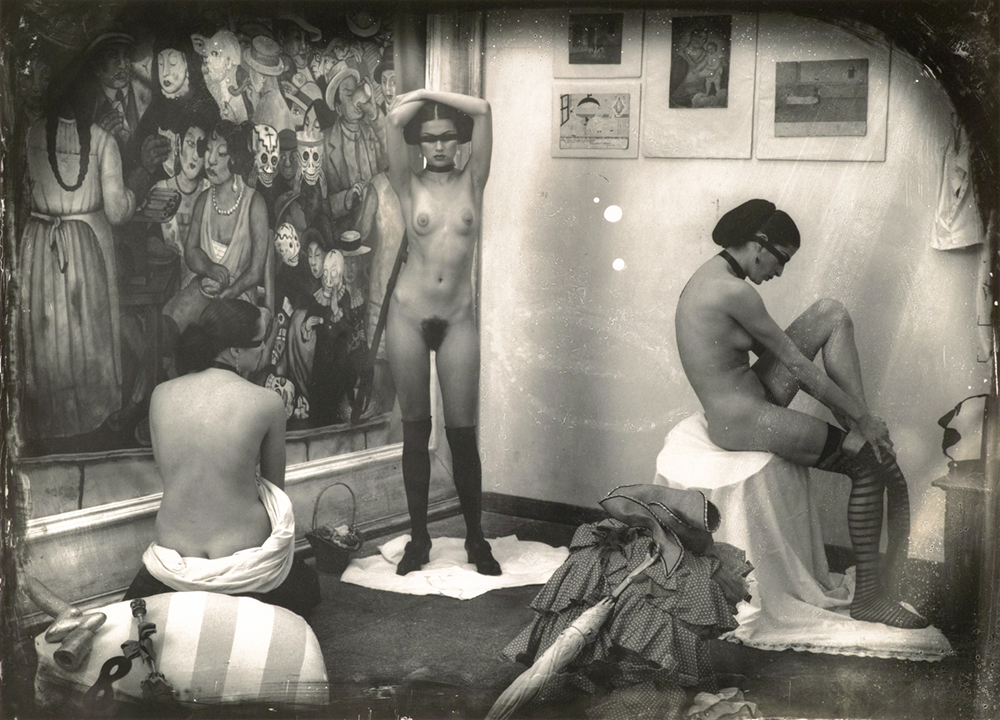
©Joel-Peter Witkin, courtesy Etherton Gallery, “Three Kinds of Women” (1992), toned gelatin silver print
EC: It sounds like it’ll be quite the show—almost like an encyclopedic museum exhibition.
TE: We’re approaching it that way. In this business, the most important thing that you have is your reputation—and your reputation is based on how you present yourself. How work is presented in the gallery is a reflection on me.
We make shows look like museum shows. I’m proud of that, and it won’t change. It’s important to me that people leave the gallery space, or our fair booth, with an impression of a gallery that’s serious and well-run. We want to get in the habit of creating an experience in our viewers, rather than having them just breeze through.
I have a lot to think about for this show in order to make it look good and have it make sense, and have it be good for the audience but also for the artist. Think about it—Joel’s trusting me with his life’s work. I have 200 prints here—that represents so much time!
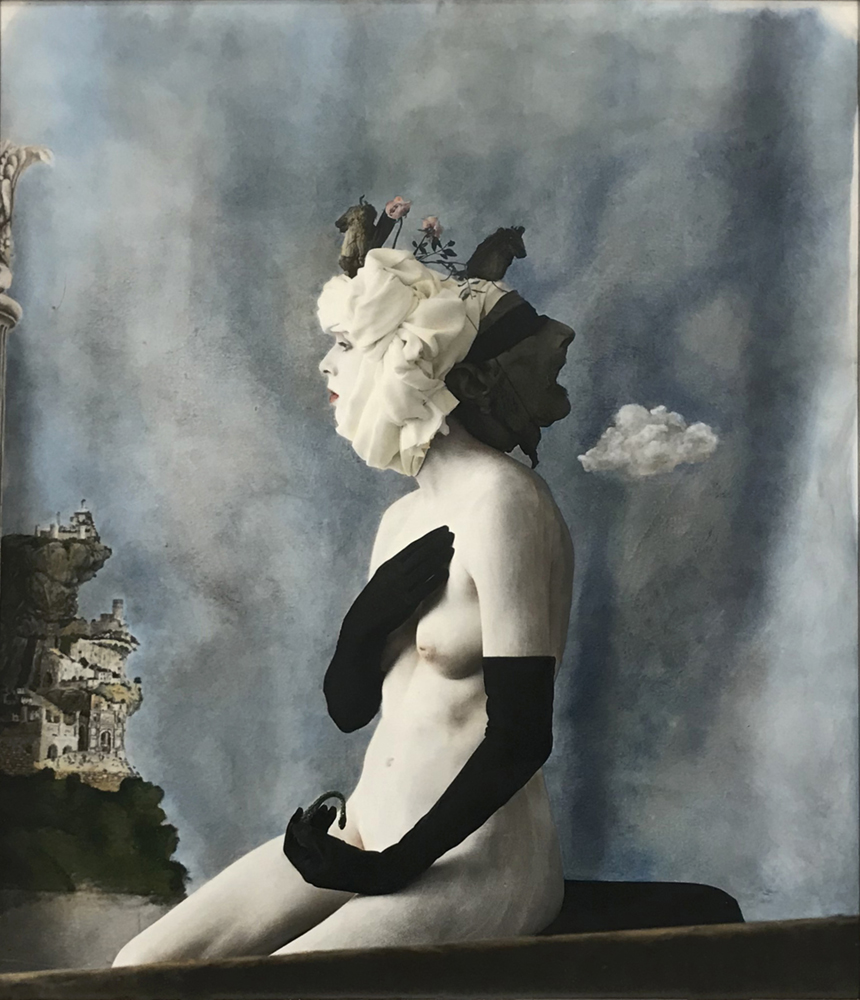
©Joel-Peter Witkin, courtesy Etherton Gallery, “Prudence, Paris” (1996-2021), gelatin silver print, hand-colored encaustic
EC: What are some favorite or notable experiences to have come about over the past forty years?
TE: I would say that joining AIPAD in 1985 was probably one of the single most important things that I did because it put me in a network of people. I wasn’t isolated in Tucson. Coming from a relatively small town, AIPAD was a big deal for me—to be in New York on the same stage as Howard Greenberg and Jeffrey Fraenkel and Pace McGill. The fair opened up a lot of doors.
More recently, I’m proud of a portfolio of Danny Lyon’s work that we published in 2019. It’s called Danny Lyon, Thirty Photographs, 1962-1980, and it’s a ‘greatest hits’ kind of portfolio. It pulls from every one of Danny’s major projects, and every picture in it is great. The prints were done by a printer in New York—Chuck Kelton—who has been working with Danny for thirty years. Chuck is the best silver gelatin printer in the world; the consistency from print to print is so good that it’s hard to believe.
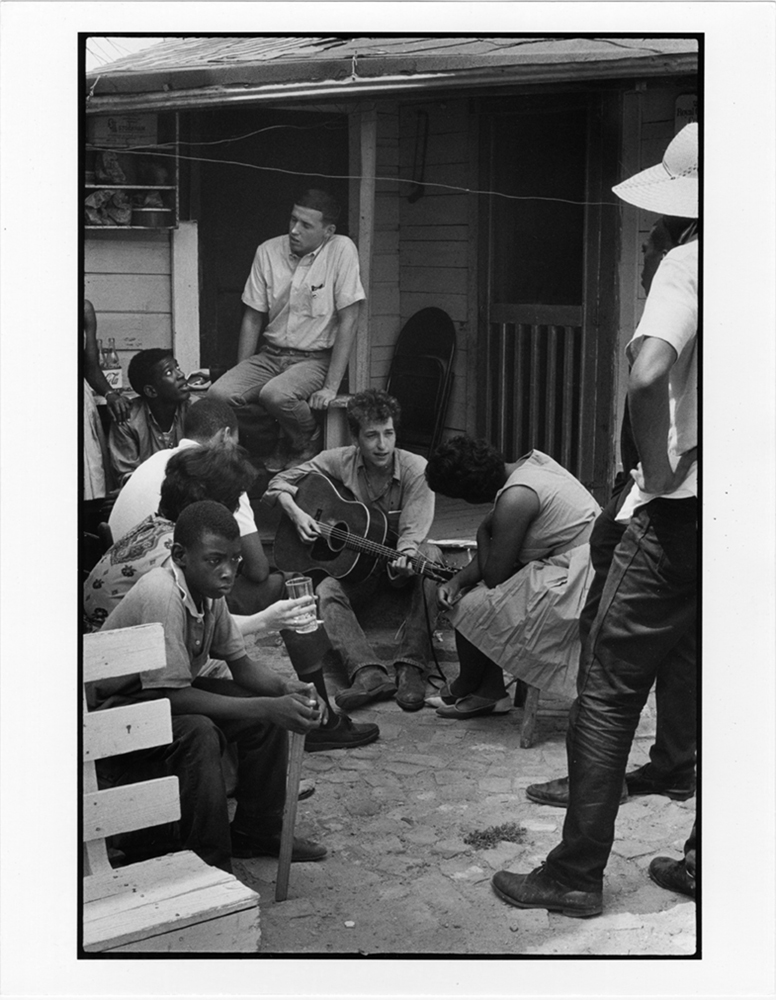
©Danny Lyon/Magnum Photos, courtesy Etherton Gallery, “Bob Dylan Behind the SNCC Office, Greenwood, Mississippi,” (1963), gelatin silver print

©Danny Lyon/Magnum Photos, courtesy Etherton Gallery, “Cotton Pickers, Ferguson Unit, Texas Department of Corrections,” from Conversations with the Dead (1968), gelatin silver print
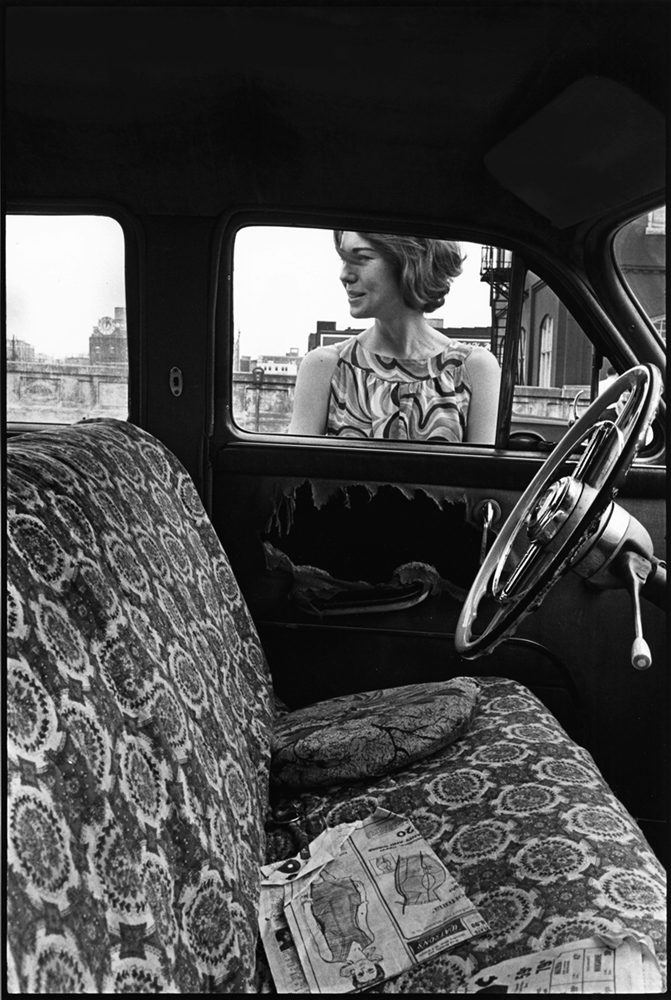
©Danny Lyon/Magnum Photos, courtesy Etherton Gallery, “Leslie, Downtown Knoxville,” from Memories of Myself (1967), gelatin silver print
EC: Is there anything that I didn’t ask you about that you’d like to mention?
TE: I always feel like I need to give my wife some credit, too. I met her three years after I opened the gallery, we got married shortly after that, and she’s been along for the whole thing. All of the openings, all of the art fairs, all of the stress and anxiety and worry. I’ve had her support the whole time—without it, I’d find it hard to justify what I do.
She doesn’t work with me, but when we do art fairs, she almost always goes. She’s been to every AIPAD that I’ve been to! She’ll wear a nametag—Mel Etherton. After an art fair, the phone will ring and it’ll inevitably be someone asking, “Hey, is Mel there?” And I’ll say, “no, she doesn’t really work here—can I help you?” And they’ll say, “No, we met her at AIPAD and just wanted to talk to her.” She makes an impression!
Mel keeps asking me when I’m going to retire. And I tell her that as long as there’s a box of prints that aren’t sold, I’m not retiring. That’s when I know I’ll be done—when I have nothing else in a box to sell. Which, as you know, is never going to happen.
Posts on Lenscratch may not be reproduced without the permission of the Lenscratch staff and the photographer.
Recommended
-
Earth Week: Richard Lloyd Lewis: Abiogenesis, My Home, Our HomeApril 23rd, 2024
-
Earth Month Photographers on Photographers: Jason Lindsey in Conversation with Areca RoeApril 21st, 2024
-
Earth Month Photographers on Photographers: J Wren Supak in Conversation with Ryan ParkerApril 20th, 2024
-
Earth Month Photographers on Photographers: Josh Hobson in Conversation with Kes EfstathiouApril 19th, 2024
-
Earth Month Photographers on Photographers: Leonor Jurado in Conversation with Jessica HaysApril 18th, 2024

